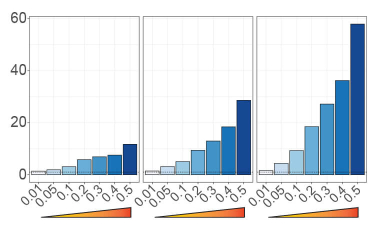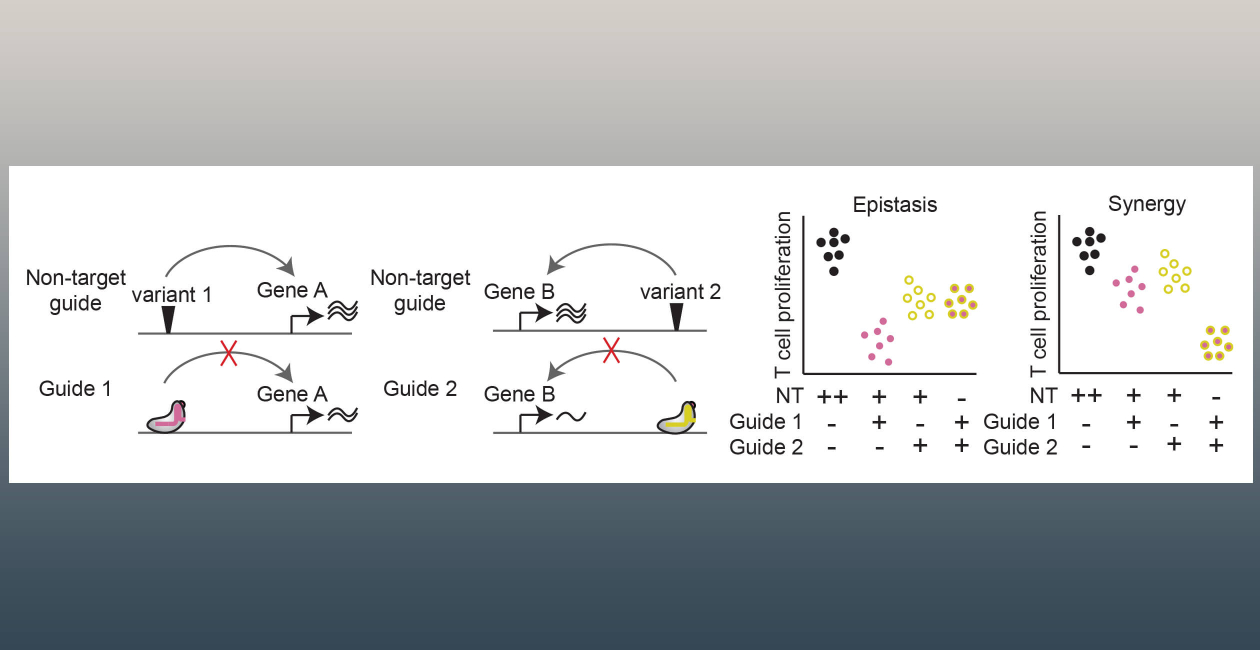Risk variants individually have small effect sizes, typically below an odds ratio of 2, indicating that any individual variant provides low risk per individual for eventually acquiring disease. Instead, genetic risk is likely promoted through the collective actions of multiple risk variants. Thus, there is a premise to understand how variants act collectively to increase risk for disease.
According to a recent study, common variant epistasis using genetics alone requires >2M unrelated people for >76% positive predictive value. However, perturbational approaches do not require such power, and because we will link variants with T cell biology using CRISPR interference and base editing approaches, we are uniquely poised to explore whether variants that modulate the same T cell function act in epistasis or synergy.
Additional Research Projects

Mapping cis-regulatory regions that control immune cell function genome-wide




